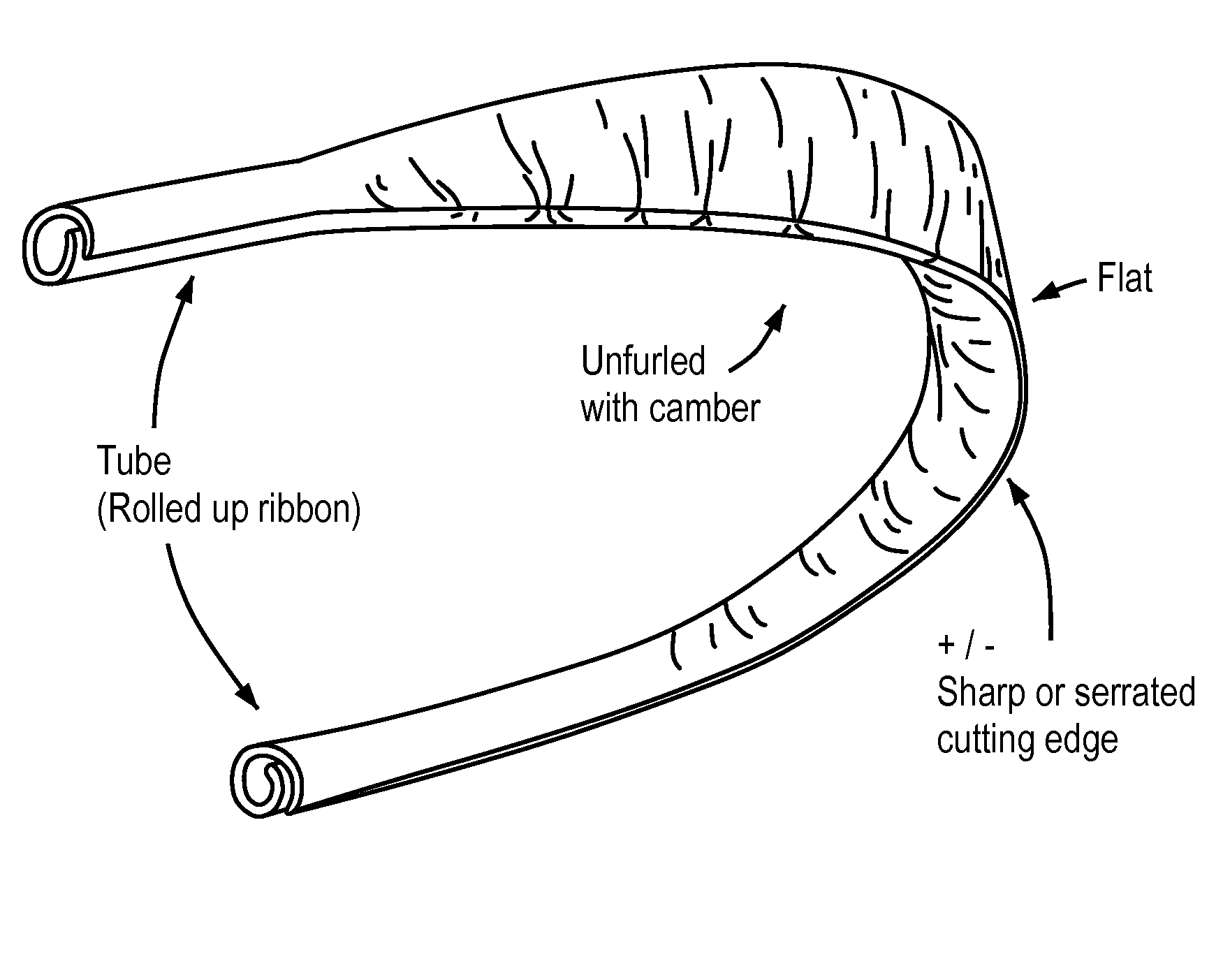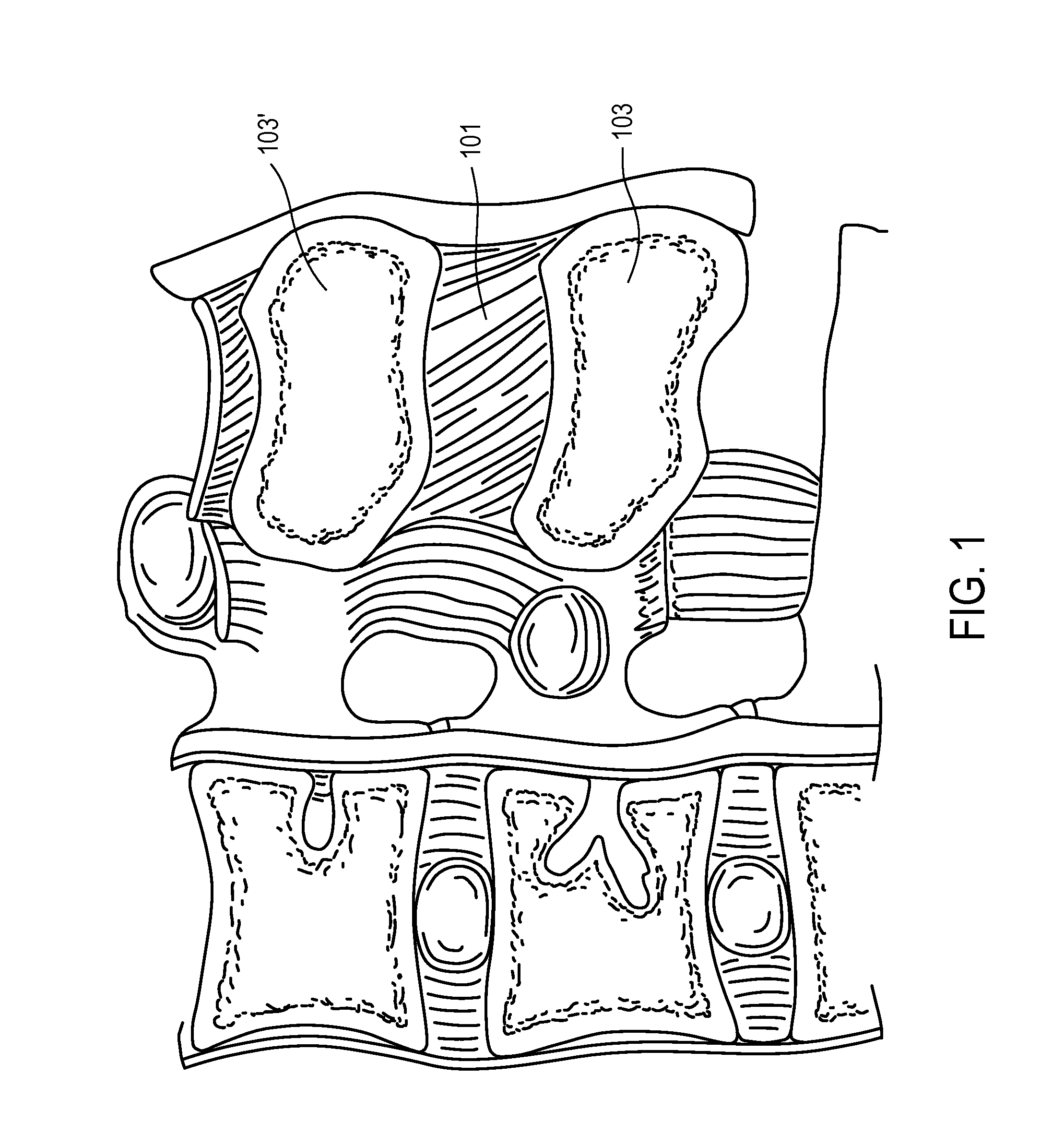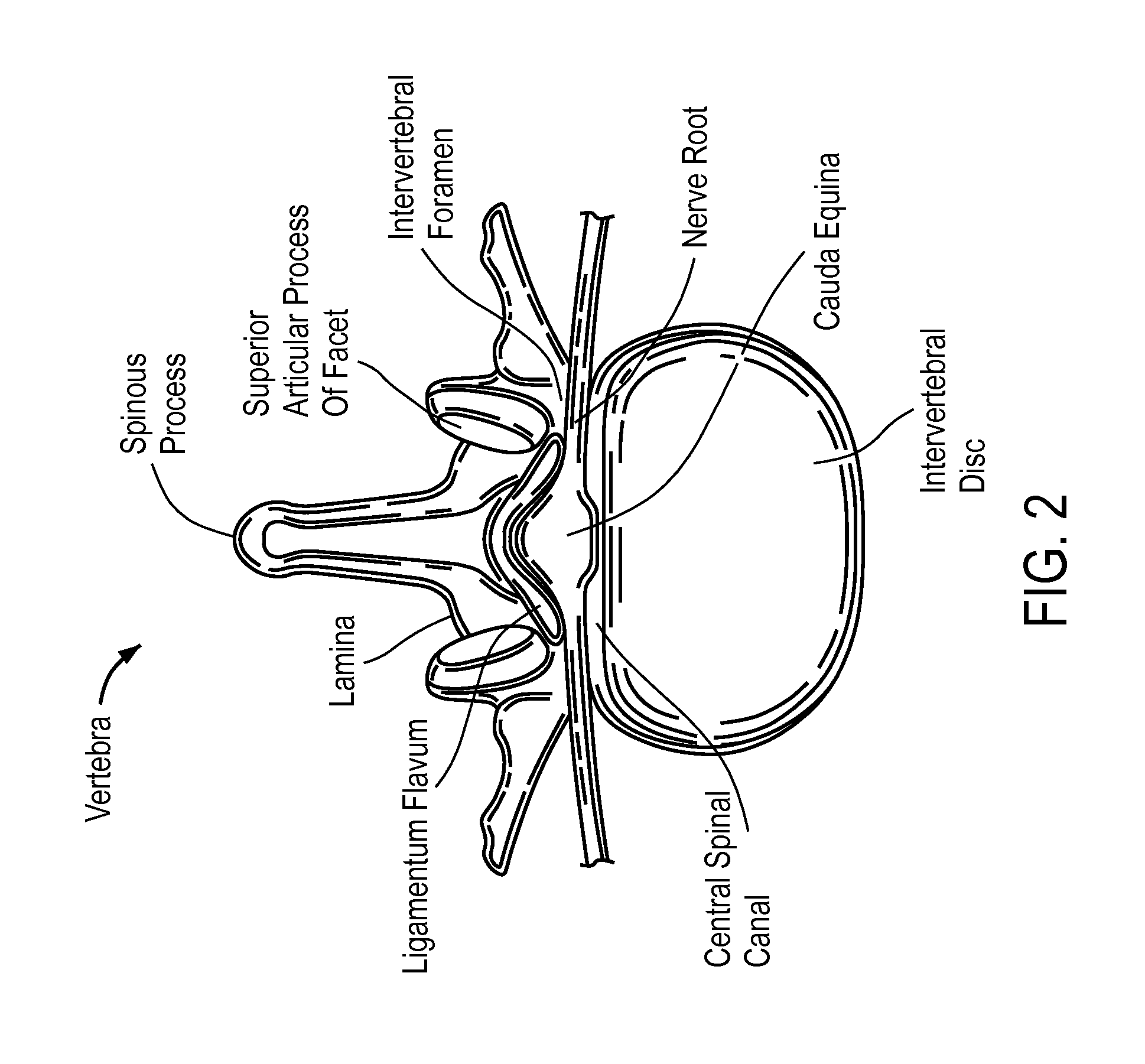Access and tissue modification systems and methods
- Summary
- Abstract
- Description
- Claims
- Application Information
AI Technical Summary
Benefits of technology
Problems solved by technology
Method used
Image
Examples
Embodiment Construction
[0058]As mentioned, described herein are devices, systems and method for treating tissue by first placing a guidewire (or “pullwire”) in position within the body, and then using the guidewire to position, anchor and / or treat the tissue. In general, these methods and systems are “bimanual” procedures, in which the implant or tissue modification device is controlled within the body from two separate locations outside of the body, and by manipulating the implant / device from both the distal and proximal ends.
[0059]These systems and methods may be particularly useful for percutaneous treatments of one or more body region. However, it should be understood than any of the devices, methods and systems described herein may be used as part of an “open” surgical procedure in which access to a body region is created through an opening in the tissue (e.g., by removal of tissue). Any of the systems and devices described may be performed as part of a procedure that is at least partially open. Part...
PUM
 Login to View More
Login to View More Abstract
Description
Claims
Application Information
 Login to View More
Login to View More - R&D
- Intellectual Property
- Life Sciences
- Materials
- Tech Scout
- Unparalleled Data Quality
- Higher Quality Content
- 60% Fewer Hallucinations
Browse by: Latest US Patents, China's latest patents, Technical Efficacy Thesaurus, Application Domain, Technology Topic, Popular Technical Reports.
© 2025 PatSnap. All rights reserved.Legal|Privacy policy|Modern Slavery Act Transparency Statement|Sitemap|About US| Contact US: help@patsnap.com



